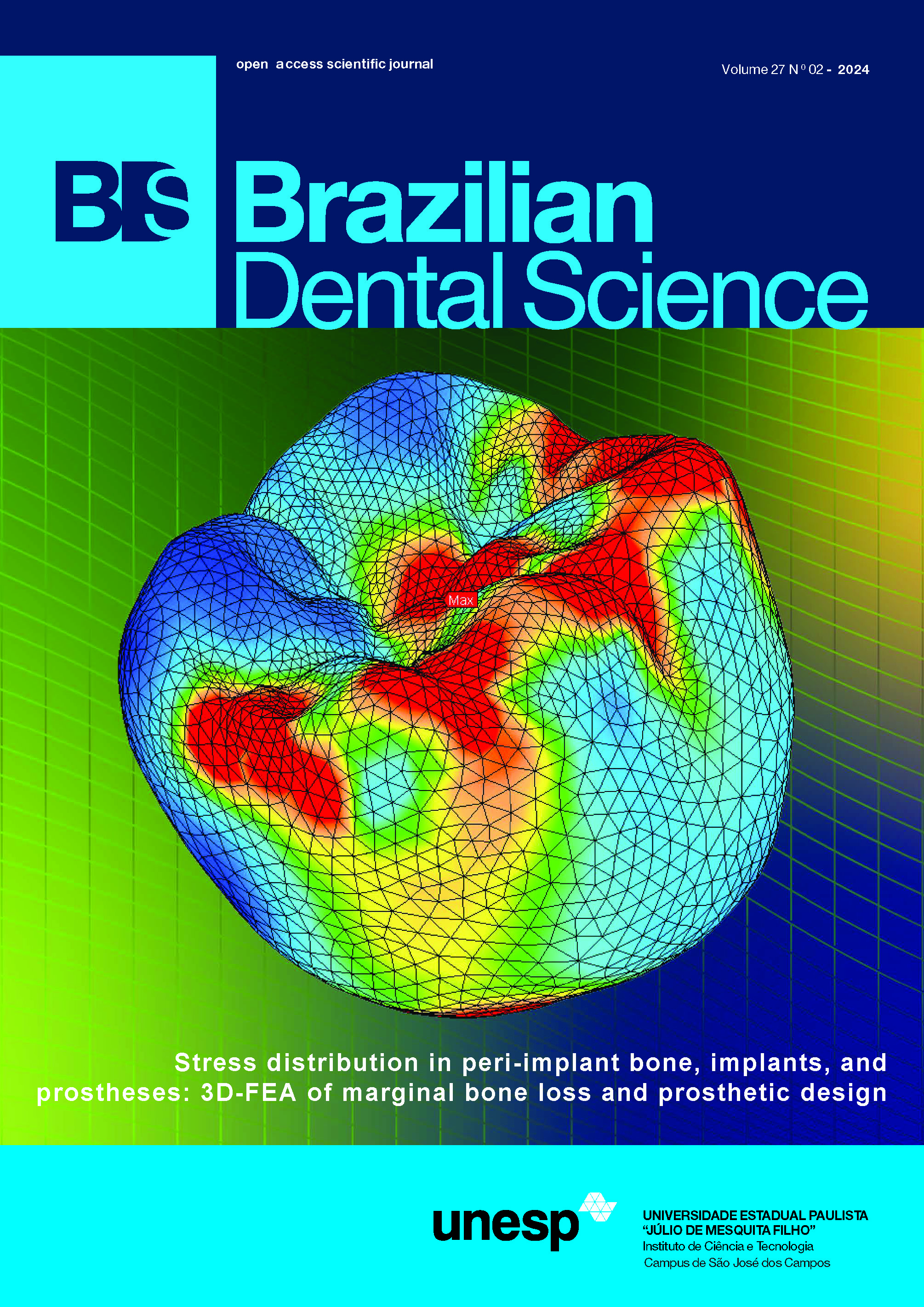Evaluation of antiseptic mouthwashes protocol against SARSCoV- 2 on orthodontic appliances (an in vitro study)
DOI:
https://doi.org/10.4322/bds.2024.e4196Abstract
Objective: The objective of this study was to evaluate the impact of daily mouthwash rinsing protocols recommended against SARS-CoV-2 on metal ions discharged from fixed orthodontic appliances, specifically Nickel (Ni) and Chromium (Cr). Material and Methods: Total of 400 hemi-arch fixed appliances were segregated into two groups, namely Nickel Titanium (NiTi) and Stainless Steel (SS), based on the type of archwire employed. Each set was submerged in 2% povidone-iodine, 1% hydrogen peroxide, 0.2% chlorhexidine and cetylpyridinium chloride mouthwashes. Distilled water was used for comparative measurements of the ions released as a control group (n=10/group). They were incubated for four periods at 37°C (one hour, twenty-four hours, one, and 3 weeks). Nil and Cr ions released from the fixed appliance were evaluated by atomic absorption spectroscopy. The data were analyzed by the Kruskal-Wallis test and paired comparison analysis. Results: The worst levels of Ni and Cr liberated from the SS group observed in povidone-iodine mouthwash at 1.173 and 1.701 ppm, respectively, while the chlorhexidine mouthwash released accepted level of Ni and Cr at 0.033 and 0.056 ppm, respectively. The NiTi group displayed the appalling ions released of Ni and Cr in povidone-iodine mouthwash at 1.87 and 2.4 ppm, respectively. Whereas the released levels of Ni and Cr ions from the chlorhexidine group and cetylpyridinium chloride were 0.048 and 0.127 ppm, respectively, with significant differences between the tested groups and intervals. Conclusion: Chlorhexidine and Cetylpyridinium chloride mouthwashes were the appropriate options for orthodontic patients to minimized ions released according to this study protocol.
KEYWORDS
Metal release; Mouthwash; Nickle Ions released; SARS-CoV-2; WHO.
Downloads
Published
How to Cite
Issue
Section
License
Brazilian Dental Science uses the Creative Commons (CC-BY 4.0) license, thus preserving the integrity of articles in an open access environment. The journal allows the author to retain publishing rights without restrictions.
=================




























